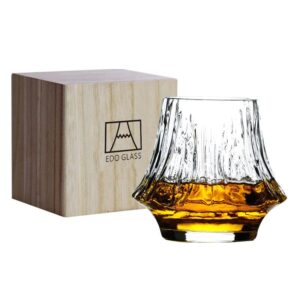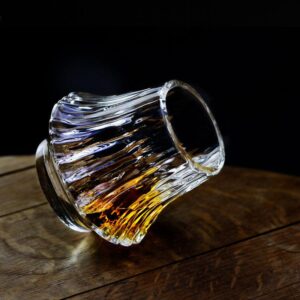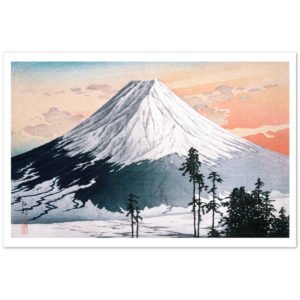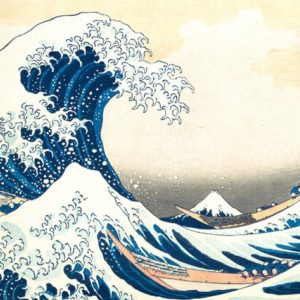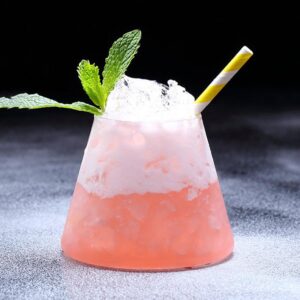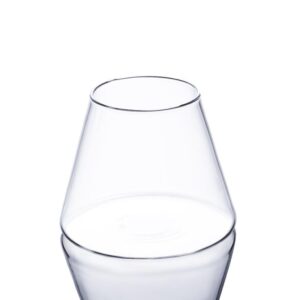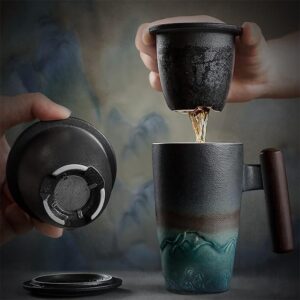Monochrome ink painting or Suiboku sansuniga was introduced to Japan during the mid-14th century. The early forms of this art were inspired by Chinese ink painting which uses a brush, ink, paper, and inkstone. Nature is the most common subject in these paintings, illustrating landscapes, plants, and animals in different strokes. If there are any humans in the painting, they are typically depicted as minor detail and not given much emphasis.
Over time, Japanese artists created their own distinct styles, leading to the development of paintings that show realistic landscapes known as Shinkeizu. The infamous Mt. Fuji has long been a favourite subject of painters in their work. As changes in artistic styles and techniques began to occur, the representations of this iconic landscape evolved as well. Know more about how realistic sceneries began to emerge in Japanese paintings, and see how this is reflected in Mt. Fuji landscape paintings.
Japan’s Shift From Imagined to Real Scenery Paintings
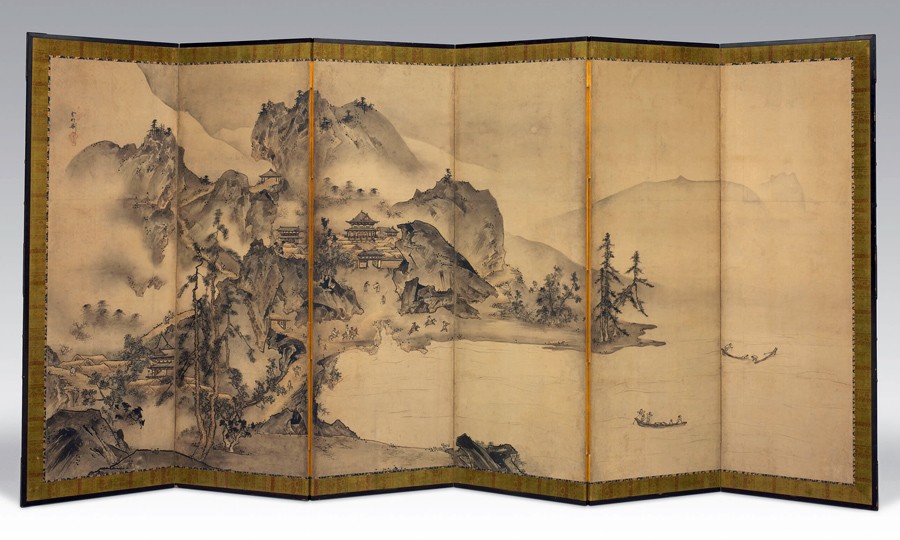
“Landscape of the Four Seasons” by Sesson Shukei. Image Credit Art Institute of Chicago
Around the middle of the 9th century (Heian period), the genre of landscape painting started to take on its Japanese character. Paintings during this time lacked the didacticism of Buddhist symbols and was more inclined to convey the Japanese people’s appreciation for the surrounding natural beauty. Thus, this period saw a widespread decline in the impact of earlier centuries’ Chinese aesthetics and creative models.
Since the 10th century, landscape painting has developed as a distinct genre with the theme of the four seasons (shiki), and, primarily, depictions of specific places famous for historical events, natural beauty, or as pilgrimage sites. Landscapes have continued to be used as a narrative compositional element, evolving from the Chinese concept of figurative scenes set against the local mountain landscape to truly Japanese sceneries.
The meishoe genre, known as “picture of famous places”, produced a number of well-known iconographical cycles that were incorporated in both the vibrant yamatoe style and the monochromatic suiboku sansuniga ink painting.
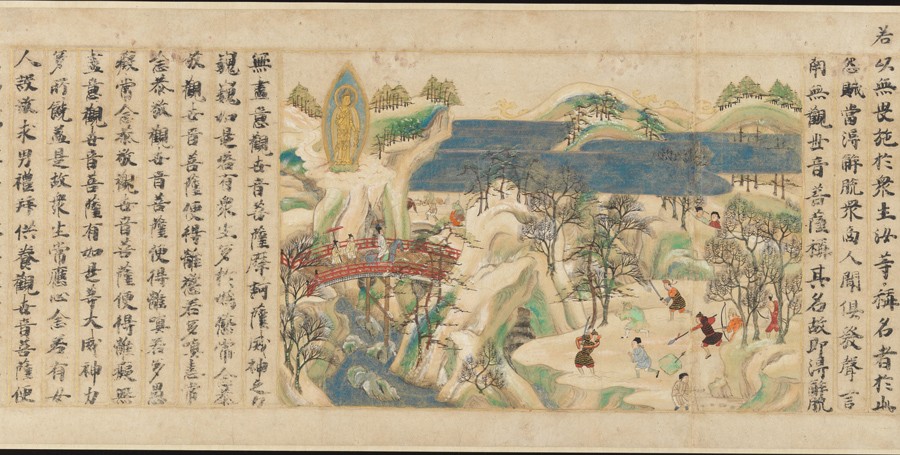
“Universal Gateway” (Chapter 25 of the Lotus Sutra) by Sugawara Mitsushige. Image Credit The MET Museum
Around the Kamakura period (1185–1333), meishoe paintings began to be created (under the influence of Song ideas), especially on mandalas in shrines, increasing the Buddhist and Shintoist ambience of sacred pilgrimage destinations. The first works in this genre date to the 13th century. Along with depicting accurate architectural details, meishoe also featured topographical sceneries.
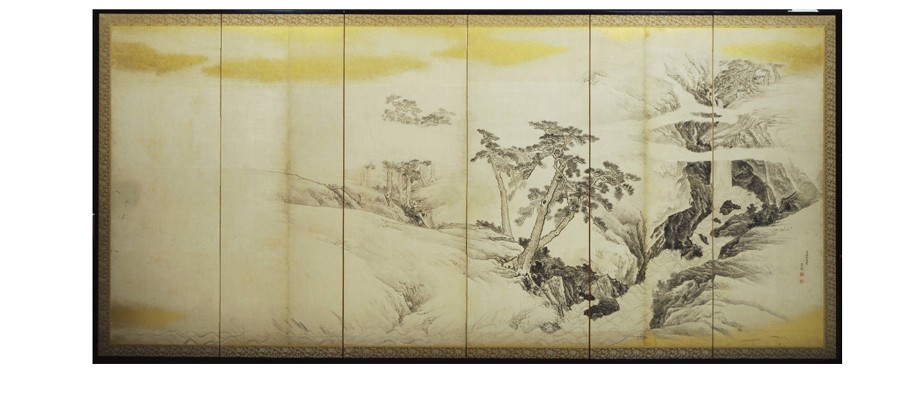
The Hozu River, a monochrome painting by Maruyama Ōkyo. Image Credit The Princeton Art Museum
Monochrome landscape painting (suiboku sansuiga) became a special symbol of spiritual meditation in Japanese painting. In both Japanese meishoe tradition and the originally Chinese concept of the ideal natural vision sansuiga, depicting a langscape’s exterior reality (shajitsu) was not the primary goal. This stems from the Chinese theory that it is impossible to render the true essence of an object merely by imitating an outer visual form (keiji) because essence changes continually.
The inner energy (ki’i) of an object or phenomenon must be observed and captured. The visual reality was permeated with the sensory apprehension (kanjusei) of the Japanese landscape so familiar to the intimately knowledgeable viewer and so admired in poems and pictures that it could stimulate novel perceptions and aesthetic experiences.
Understanding the Shinkeizu Art Concept

View of Mt. Asama from the Usui Pass”, a shinkeizu painting during the Edo Period by Utagawa Kuniyoshi The MET Museum
Shinkeizu is a form of Japanese art that mixes Western-style perspective and anatomy with the ancient methods of ink painting (sumi-e). The term “shinkeizu” literally translates to “new pictorial diagram,” and the style first appeared in Japan at the beginning of the 20th century as a part of a larger push to modernize Japanese art and incorporate Western ideas.
The original meaning of the term shinkei suggests the Chinese concept of immediate individual experience of natural reality, reflecting the landscape’s image in the human subconscious by means of intensive perception. The artist then uses this stored visual data to create a “reflection of reality” that is subsequently projected onto a picture. The Japanese interpretation of shinkei painting is unique in an evocative landscape portrait addressing a lyrical imagination, which in turn evokes the native meishoe culture.
In contrast to the comparable trends of “realistic” medieval art, the interpretation of shinkeizu takes on a distinct connotation during the Edo era. This innovative method (in response to the European concept of realism) represents a specific stage in the evolution of painting, particularly the transition between sansuiga, or literati fictional landscape painting, and fukeiga, or in-depth study of the Japanese environment.
While traditional Chinese fictional landscape imagery frequently superseded the individual vision of the artist in medieval realism, Japanese topography was the exclusive subject of shinkeizu paintings from the modern era. The shinkeizu blend fictional and authentic representations of Japanese nature. By placing distinct components of the surrounding landscape in a fantasy composition, the artist represents both subjective and objective features.
Shinkeizu artists aimed to develop a brand-new painting style that would combine the best elements of both traditional Japanese and contemporary Western art. To produce dynamic and lifelike images of people, animals, and landscapes, they experimented with new techniques like shading, foreshortening, and the use of different perspectives.
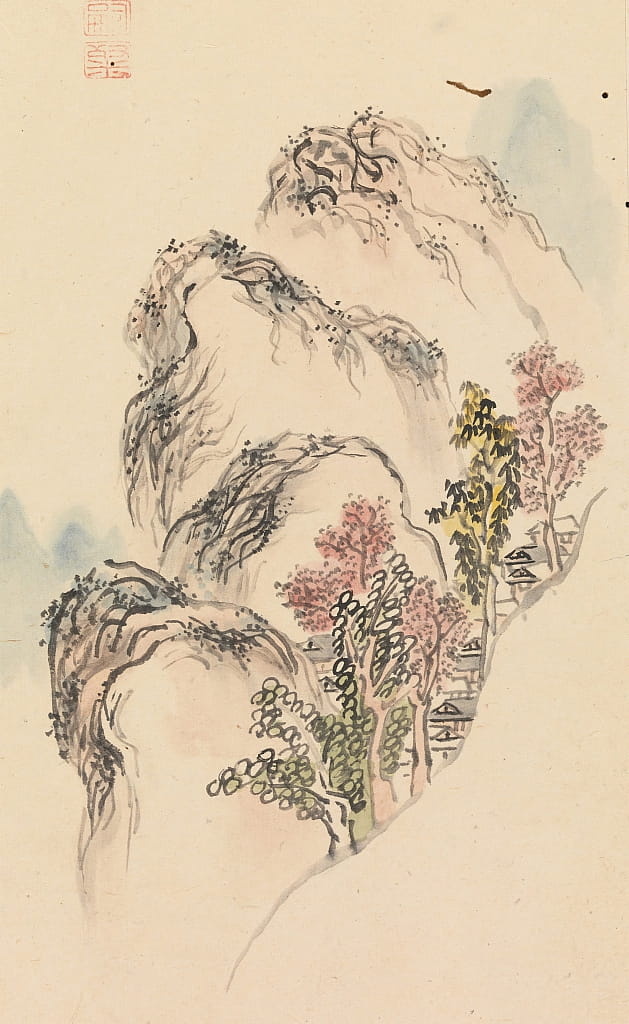
In his work about the shinkeizu concept entitled Kaiji higen (Rustic Talks on Painting, 1799), the major contemporary painter and art theorist Kuwayama Gyokushu emphasizes the value of the emotional depiction of plein air impressions and demonstrates it in the paintings of his teacher Ike no Taiga (1723—1776), who became a leading figure in this style of landscape expression. Taiga visited Japanese landscapes and created several ink sketches that accurately captured their distinctive qualities and ambience.
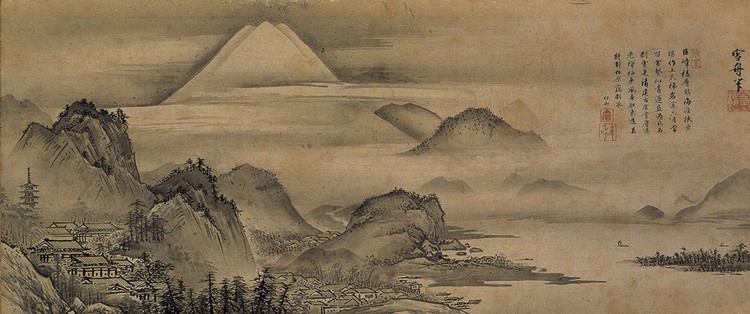
“Mount Fuji and Kiyomidera Temple” by Sesshu. Image Credit: Eise Bunko Museum
Monochrome variants of well-known Japanese landscape landscapes (meishoe) were frequently created as large, folding screens or as hanging scroll sequences. The most popular meishoe always included depictions of sacred Mount Fuji.
For example, the Kamakura artist Shikibu Terutada (active in the first half of the 16th century) painted the mountain in different seasonal transformations in eight scrolls. These Eight Views of Mount Fuji is a reference to the Chinese theme of Eight Views of the Xiao and Xiang Rivers not only in terms of the number of paintings but also by their visual citation of thematic compositions from this cycle.
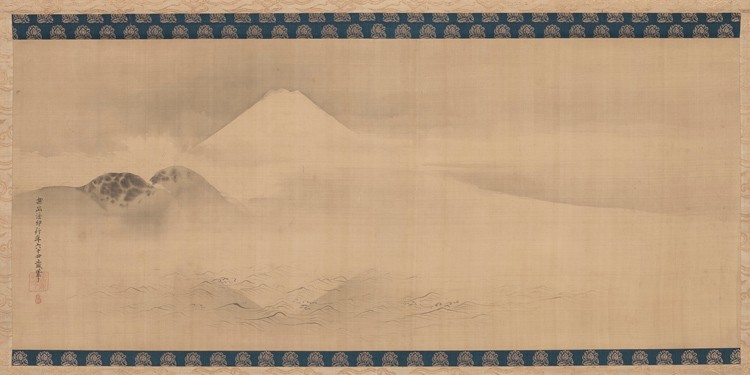
“Mt. Fuji” by Kanō Tan’yū Image Credit: Google Arts and Culture
The lengthwise format of Sesshu became a pattern for later paintings and served as inspiration for the stylistically different Mount Fuji by Kanō Tan’yū (1602-1674). The same angle is used in Mount Fuji in the National Gallery in Prague, which depicts the mountain viewed from over the Miho no Matsubara region with the characteristic pine tree grove in a longitudinally formatted horizontal perspective in the spirit of traditional composition.
The National Gallery in Prague’s Mount Fuji as Viewed from Suruga Bay was created during a time when traditional ink painting coexisted with the Western landscape painting style popular at the turn of the 18th and 19th centuries as European realism made its way to Japan. The painting features several shades of ink, with a light tint used in the background and a more distinct tone concentrated in the foreground in the line of the pine tree grove and cliffs. The background also features Mount Fuji and the hazy silhouette of the distant Ashitakayama Range to the right of the painting.
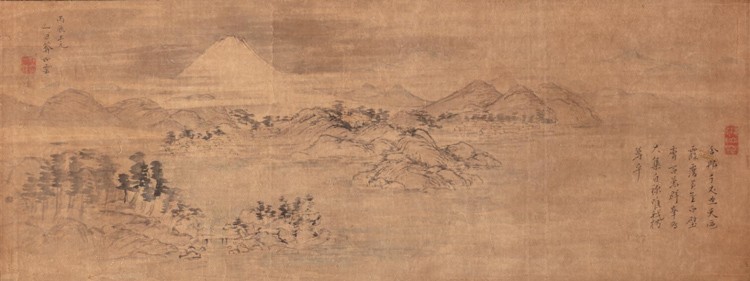
“Mount Fuji As Viewed from Suruga Bay” by Ikka an Joun Image Credit: National Gallery Prague
The Prague painting of Mount Fuji also incorporates several literati painting techniques: the complex mountain structure was painted using the “dry brush” technique kanboku; the tree trunks, a bridge, and the outlined houses were painted using thin, dry brush strokes (ksenh); and the inner structure of the rocky fragments was painted using strokes that resembled hemp fiber (himashun or mahishun).





































